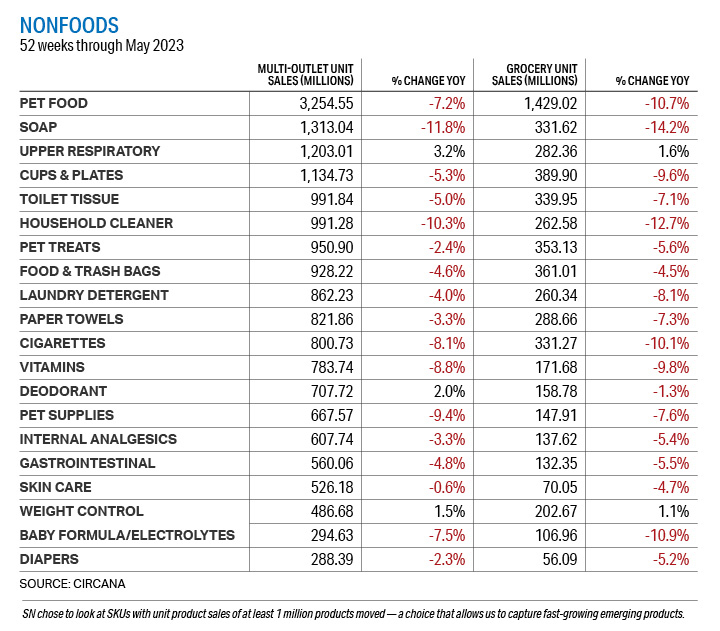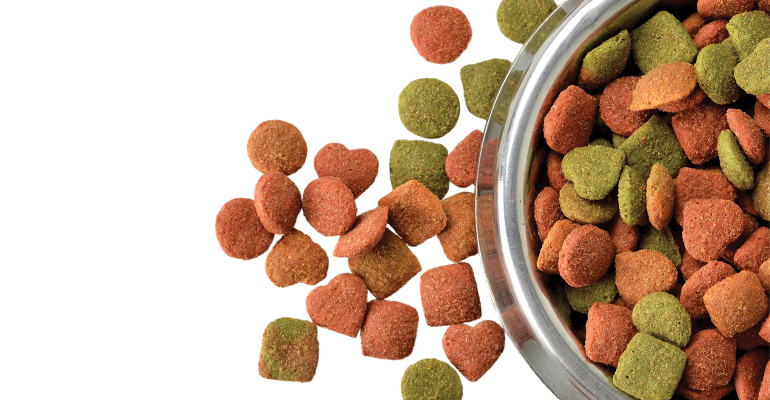Nonfoods have long been a challenging category for the supermarket sector, given the competition retail grocers face from other channels such as beauty care retailers, drug stores, mass merchants and pet care specialists.
Those pressures remain, and have been compounded by the increasing availability of ecommerce for these items, especially items such as pet foods and other pet products.
In the pet food category, dollar sales in grocery stores were up significantly for the year at 13.5%, according to Circana data. At the same time, however, unit sales were down 10.7%, perhaps indicating that consumers were buying larger pack sizes to save money on a per-pound basis.

The higher dollar sales could also reflect the ongoing premiumization of the category, which has seen consumers seeking many of the same health benefits for their pets that they want for themselves.
“They are looking for foods with added benefits for digestion, urinary care, and things like that,” said Sally Lyons Wyatt, executive VP and practice leader at Circana. “It’s a path that’s very parallel to human food, where consumers are looking for wellness and functional ingredients — things like probiotics, fish oil concentrate and collagen.”
In other nonfoods categories, such as health and beauty care and cosmetics, some consumers have been trading down to economize, and at the same time looking for do-it-yourself options that may be cheaper than going to beauty salons.
“Customers are still spending on self-care but looking for more value-driven options,” Shelby Stritzke, VP of fashion, beauty and innovation for Hy-Vee, told SN last year.
She cited double-digit sales gains in categories such as nail care and hair coloring, for example.
Some grocery retailers reported gaining market share in beauty care during the pandemic, as consumers tended to shop fewer stores, but reports indicate that these shoppers have been returning to beauty care specialists such as Ulta and Sephora, as well as mass merchandisers such as Target that offer on-trend brands at value prices.
These retailers “have done a great job at catering to new and emerging beauty brands,” said Dana Kreutzer, project lead at research and consulting firm Kline’s consumer products practice, citing the company’s Beauty Retailing USA report. “This has helped these retailers evolve with the changing competitive landscape.”
Circana data showed grocery retailers continuing to underperform the market overall in many nonfood categories, with weaker dollar sales gains and bigger declines in unit sales. Even in categories where supermarkets eked out slight gains in both dollars and units, such as weight control products, they failed to keep pace with multi-outlet sales.
Weight control unit volume rose 1.1% in supermarkets, for example, and grew 8.6% in dollar sales. That compares with unit gains of 1.5% across all retail segments, and dollar sales gains of 13.4%. Toilet tissue followed a similar pattern, with both units and dollars up slightly in supermarkets, and up slightly more across all outlets.





